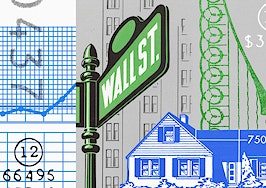This report is available exclusively to subscribers of Inman Intel, a data and research arm of Inman offering deep insights and market intelligence on the business of residential real estate and proptech. Subscribe today.
Fully digitizing the mortgage closing process can save lenders more than $400 in costs per loan, and most of those savings stem not from operational but secondary market efficiencies, according to new research by digital closing platform Snapdocs.
It’s easy to imagine the operational efficiencies lenders would achieve by digitizing and automating their closing process — including reduced errors, saved time, and doing away with shipping costs associated with paper documents.
But it turns out that while operational efficiencies can trim up to $87 in costs, Snapdocs found secondary market efficiencies like funding cycle reduction, decreased rate lock extensions and eliminating lost or damaged notes can generate up to $318 in savings.
Average savings per loan by level of digitization

Source: Snapdocs eBook, “Quantifying the Value of eClose.”
The average gross savings per loan “significantly increases as the transaction becomes more digitized,” Snapdocs said in releasing the report Monday.
Snapdocs collected data in February from 25 lenders employing three levels of digitization:
- Hybrid — Parties can eSign non-notarized documents, but a paper note, ink notarization, and an in-person closing appointment is required. Average savings: $110 ($47 operational plus $63 secondary market savings).
- Hybrid plus eNote — Digitized promissory notes can be transferred in and out of an eVault, eliminating manual shipping and certification of paper notes. Average savings: $294 ($47 operational plus $246 secondary market savings).
- Full eClose (RON) — Documents and promissory notes are digitized and eSigned, and instead of meeting in person with a notary, two-way audiovisual technology is used to conduct remote online notarization (RON). Average savings: $405 ($87 operational plus $318 secondary market).
All 50 states allow eSignatures on ancillary closings docs, and all but eight allow remote online notarization. According to the Mortgage Bankers Association, the exceptions are Alabama, California, Connecticut, Georgia, Massachusetts, Mississippi, Rhode Island and South Carolina.
That will be welcome news to lenders, who have been struggling to cut costs after the big runup in mortgage rates last year cut into their profitable refinancing business.
According to a recent survey by the Mortgage Bankers Association, three out of four independent mortgage banks lost money in the fourth quarter of 2022, as production expenses climbed to $12,450 per loan, a record high in surveys going back to 2008.

Aaron King
“In the current market, the entire industry is focused on reducing costs,” Snapdocs founder and CEO Aaron King said in a statement. “Our research confirms what a growing number of lenders already know—eClosing is critical to any mortgage strategy to remain competitive and improve margins.”
The secondary market efficiencies eClose technology can generate “are often overlooked,” the Snapdocs report said, but ancillary costs related to everything from time to fund to shipping fees can add up, and are where roughly 80 percent of savings are achieved.
The average loan takes 16 days to fund, with lenders incurring interest fees due to delayed purchase execution, Snapdocs said. Delayed funding “can also negatively impact a lender’s warehouse line capacity, damaging their ability to extend additional loan products to borrowers,” the report said.
By digitizing promissory notes and using automation to transfer notes in and out of eVaults, “lenders dramatically speed up funding cycles by eliminating the manual shipping, certifying, and validating of paper promissory notes and other critical to fund documents.”
The reduction in funding cycle time is the biggest single savings component uncovered by Snapdocs, averaging $63 with hybrid closings, $210 with hybrid and eNote, and $263 with full eClose, Snapdocs said.

Lilly Mata’utia
“We’re seeing purchases within five to six business days with eNotes, whereas paper notes will take up to 16 business days,” Evergreen Home Loans executive Lilly Mata’utia told Snapdocs researchers. “It’s a huge improvement in funding productivity.”
Smartdocs is one of 26 RON providers certified by the Mortgage Industry Standards Maintenance Organization (MISMO). That’s up from 10 MISMO certified RON providers in April 2021.
But there are only five MISMO certified eClosing providers — Amrock, DocMagic, Docutech, Encompass, and Snapdocs — that take borrowers through the entire closing process electronically.
Rocket Cos. subsidiary Amrock, which claims to handle the majority of U.S. eClosings, last fall announced it was gearing up to expand RON eClosings through its Clear Sign platform to include both homebuyers and borrowers refinancing their mortgage in markets where the practice is allowed.
Amrock touted its new technology as an incremental step forward for the Rocket Platform as a whole, which allows consumers to use their smartphone to search for a home using Rocket Homes, apply for a home loan from Rocket Mortgage, and eClose on their mortgage through Amrock.
Get Inman’s Extra Credit Newsletter delivered right to your inbox. A weekly roundup of all the biggest news in the world of mortgages and closings delivered every Wednesday. Click here to subscribe.











